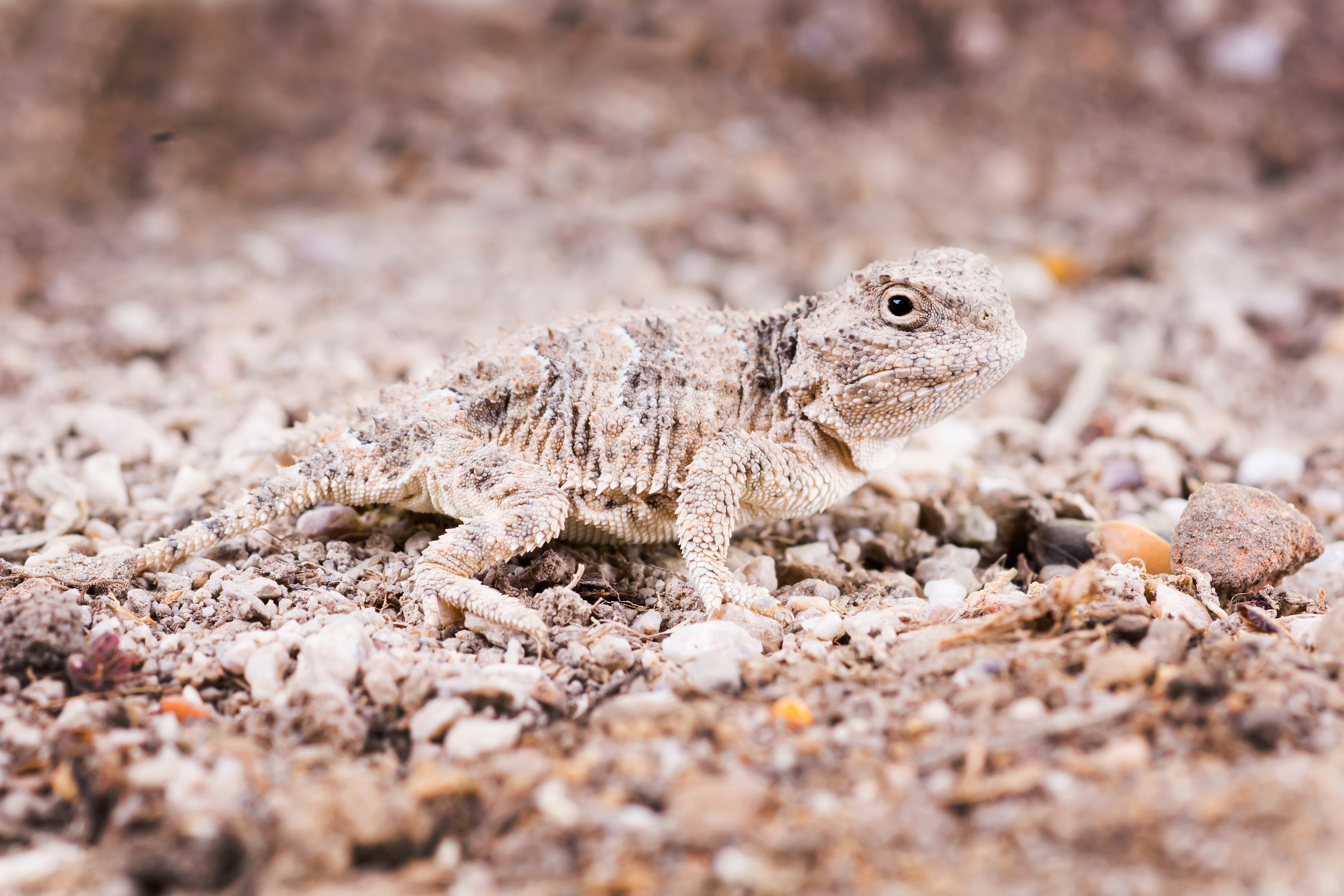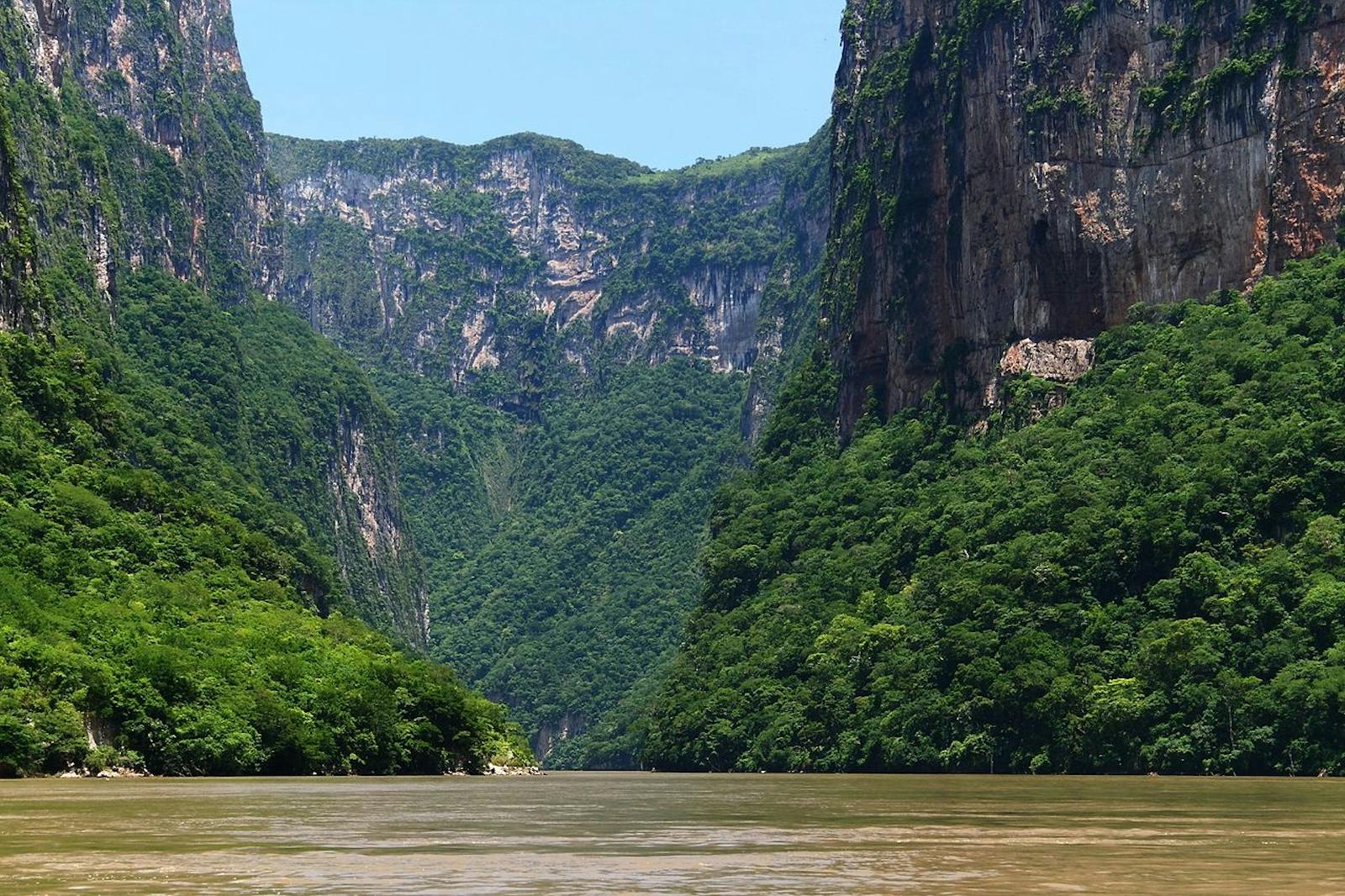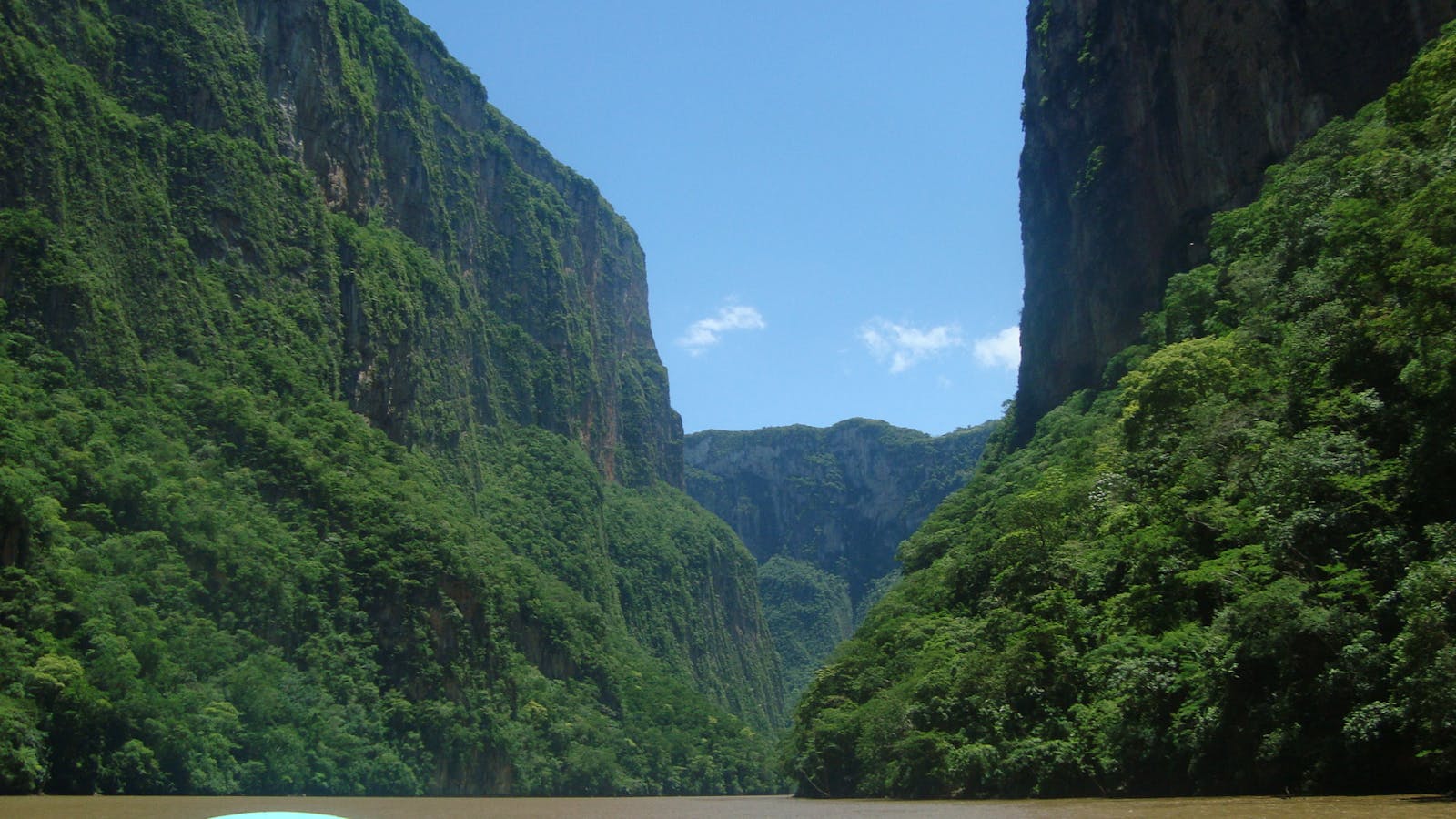Chiapas Depression Dry Forests
The ecoregion’s land area is provided in units of 1,000 hectares. The protection goal is the Global Safety Net (GSN1) area for the given ecoregion. The protection level indicates the percentage of the GSN goal that is currently protected on a scale of 0-10.
Bioregion: Central American Mixed Forests (NT25)
Realm: Central America
Ecoregion Size (1000 ha):
1,405
Ecoregion ID:
528
Protection Goal:
17%
Protection Level:
2
States: Mexico, Guatemala
Matuda's arboreal alligator lizard populations have been severely fragmented and restricted within a 3,000 km2 range in Mexico, including the Chiapas Depression Dry Forests ecoregion. These arboreal lizards live in dry forests and cloud forests and require continuous stands of tall trees as their habitats. As their name implies, these unique species live high up in the treetops and use bromeliad plants as a microhabitat to acquire water and to camouflage its spiny body. Because bromeliads attract many other species as water spots in dry forests, the lizards also benefit from these potential food items. In addition, these lizards will search for large and small insects and other food items among the high branches, only occasionally coming to the forest floor.
.jpeg)
The flagship species of the Chiapas Depression Dry Forests ecoregion is the Mexican west coast rattlesnake .
The most extensive dry forests in the state of Chiapas, Mexico lies on a vast portion of flat lands called the Central Chiapas Depression. This formation runs from east-southwest to west-northwest, with elevations from 420–800 m. It is flanked on the east by very steep slopes running down from the Chiapas plateau, and on the west by the less steep, but highly eroded slopes of the Sierra Madre of Chiapas. The climate is warm and dry, but in higher portions can be warm and sub-humid with less than 1,200 mm/year in precipitation. Soils are calcareous in nature, rocky and shallow.
The Mexican alvaradoa is the dominant tree species in the driest of the forest areas, growing mostly on flat lands. Other species include guajpó, saucillo, and copalillo. At middle elevations with higher humidity Cacho de Toro is the dominant species with yoá, copal, and pochota. Herbaceous plants form the lower strata, and some epiphytes grow abundantly on the trees.
Diverse altitudinal habitat ranges contribute to the existence of a great diversity of communities within the Central Chiapas Depression. The dry forest in this region contains approximately 980 plant species. The degree of endemism is very high, contributing to the estimated 40% of endemic species in dry forest ecosystems of Mexico. The Central Chiapas Depression is the convergence of two biogeographically important routes: the Gulf and the Pacific; thus, it contains species that have migrated to the dry forest through each of these corridors.

Horned lizard
The Mexican government has identified a terrestrial priority area within this ecoregion: La Chacona-Cañón del Sumidero. An Important Bird Area has also been identified in this ecoregion: Zapotal-Mactumatza. Characteristic fauna species include the white-tailed deer, Mexican westcoast rattlesnake, horned lizard, lesser-ground cuckoo, and lesser roadrunner.
Native dry forests in the Central Depression have been gradually eliminated and replaced by secondary communities; few portions of intact vegetation remain. Cattle grazing has contributed largely to the deterioration of this biome, along with intensive logging for agricultural purposes and human settlement. Federal protection of forest habitats was established a decade ago, but it covers comparatively little amount of the area within the ecoregion.
The priority conservation actions for the next decade are to: 1) encourage natural resource-based management for grazing and agricultural practices; 2) initiate sustainable forest resource collection management; and 3) protect all remaining stands of native forest and encourage the recovery of existing converted lands.
Citations
1. Valero, A. Schipper, J. Allnutt, T. 2018. Chiapas Depression dry forests https://www.worldwildlife.org/ecoregions/nt0211 Accessed October 4, 2018.
2. Miranda, F. 1998. La Vegetación de Chiapas. Gobierno del Estado de Chiapas, México. 596 pp.
3. Alvarez del Toro, M. 1993. Pages 9-15 in M. Alvarez del Toro, T. G. Cabrera-Cachón, C. A. Guichard-Romero, A. Ramírez-Velázquez, y G. J. Cartas-Heredia (editos), Chiapas y su Biodiversidad. México: Gobierno del Estado de Chiapas.
4. Flores-Villela, O. & Santos-Barrera, G. 2007. Abronia graminea. The IUCN Red List of Threatened Species 2007: e.T63678A12695490. http://dx.doi.org/10.2305/IUCN.UK.2007.RLTS.T63678A12695490.en. Accessed October 4, 2018.



